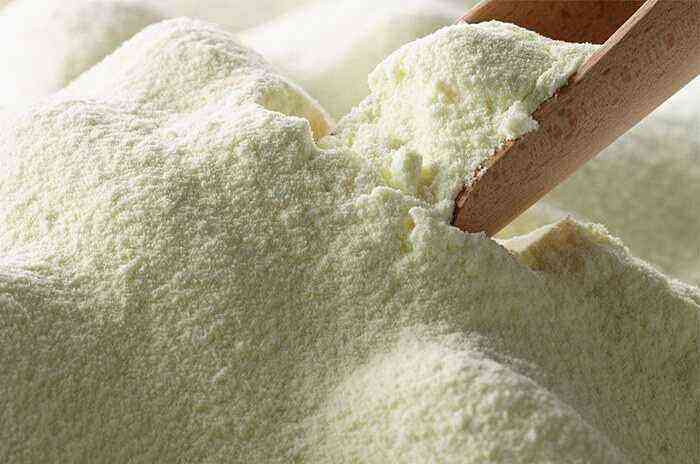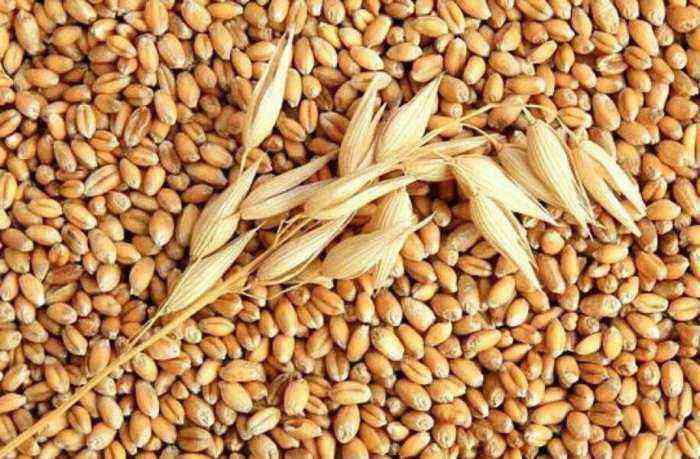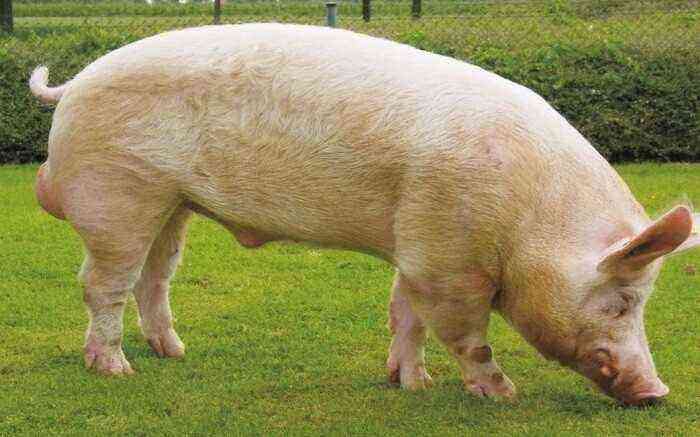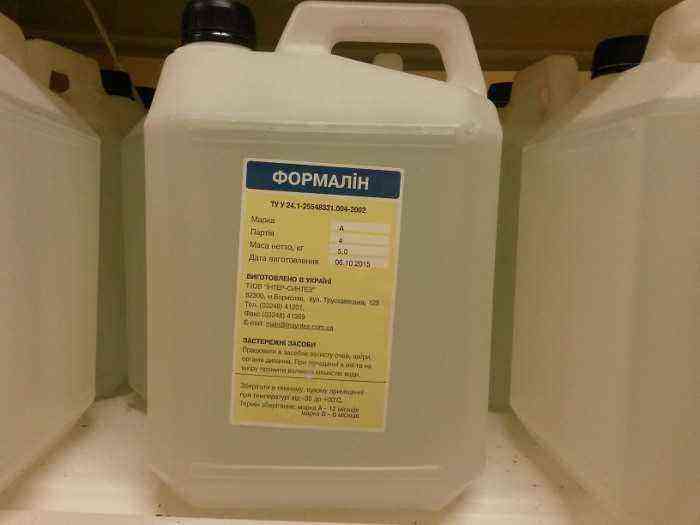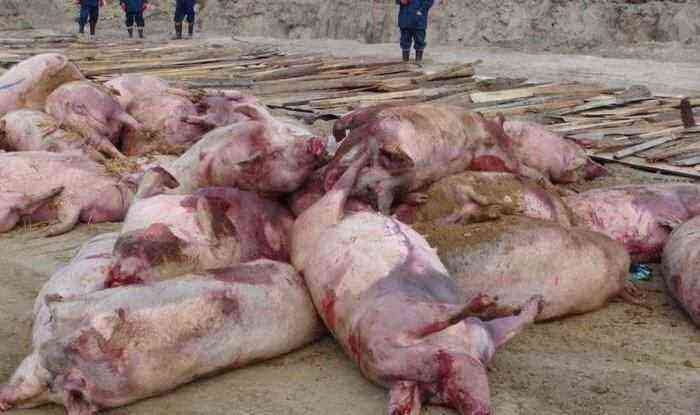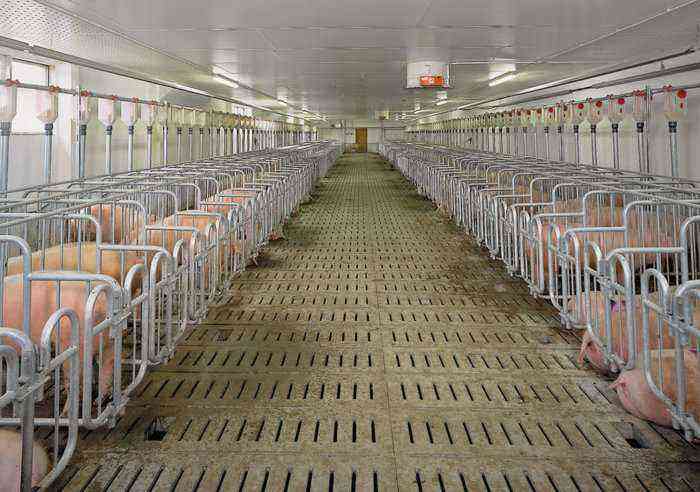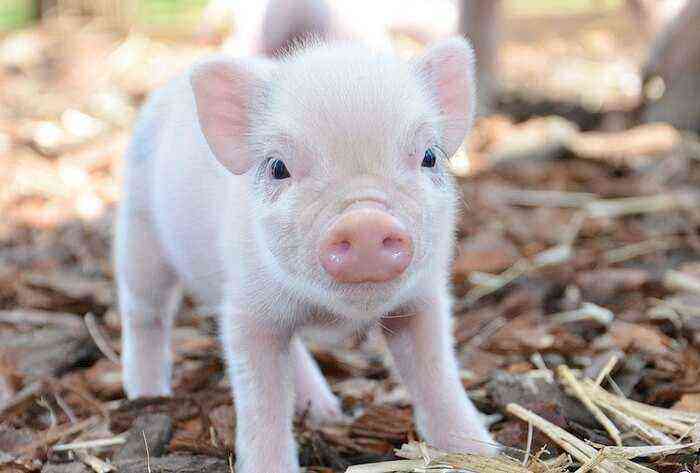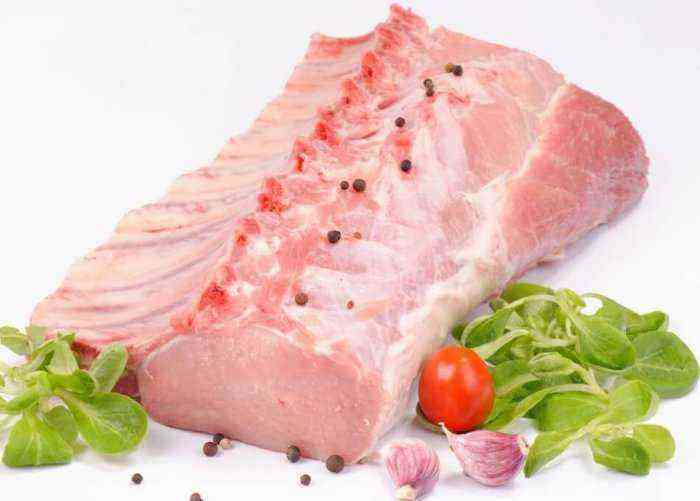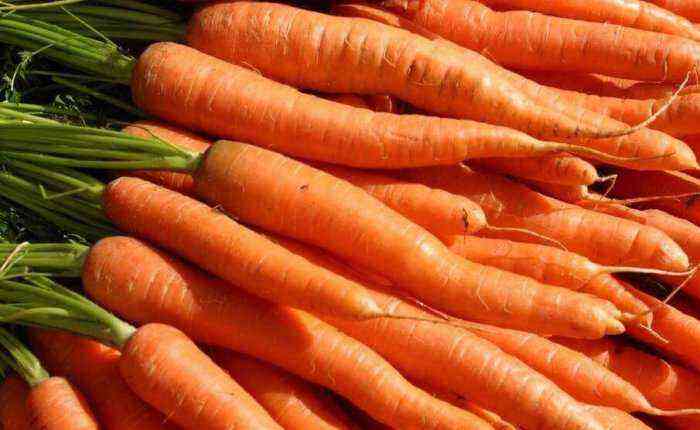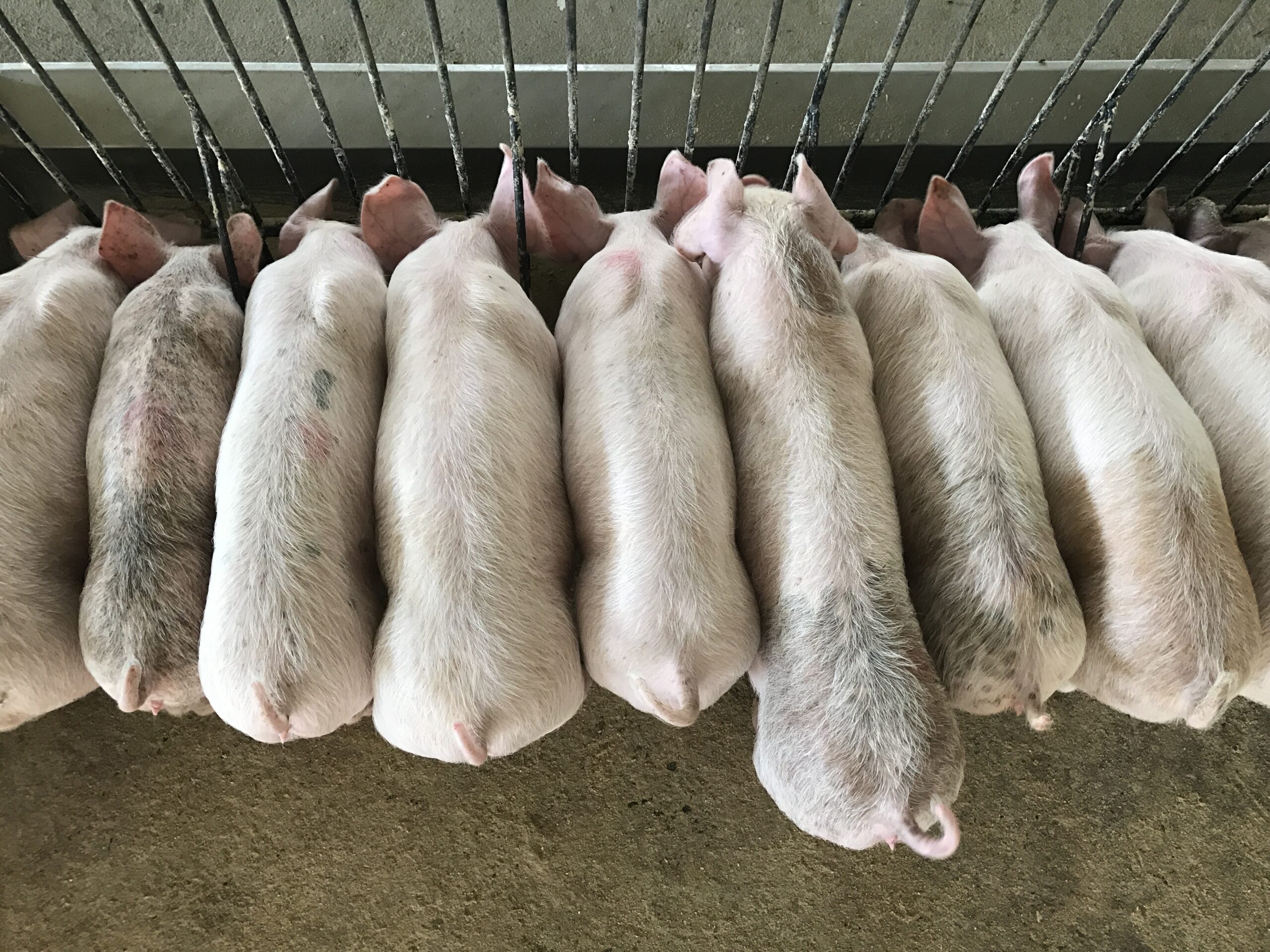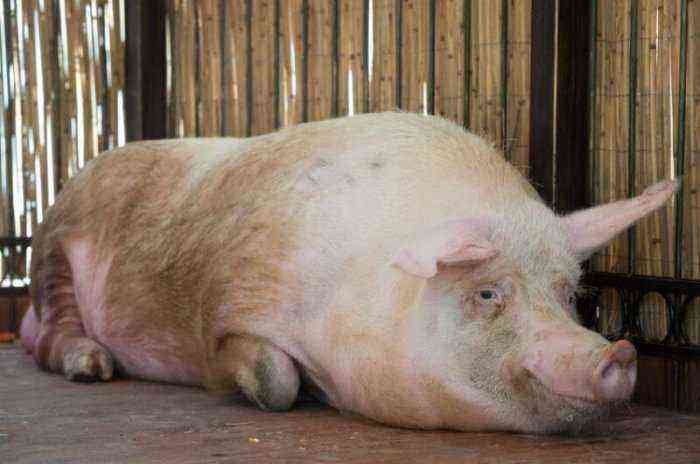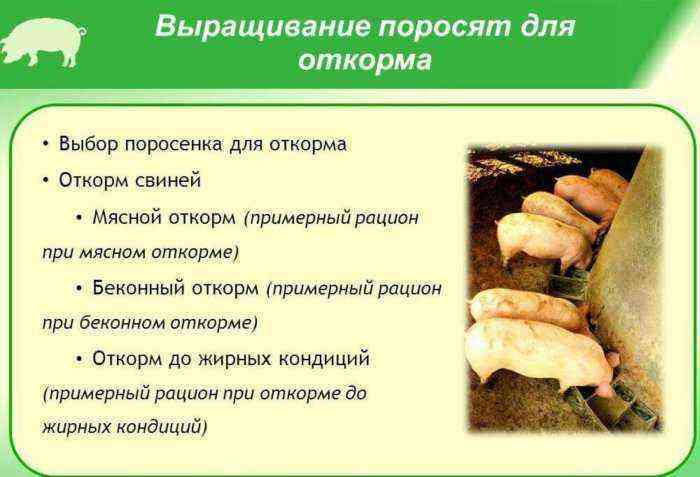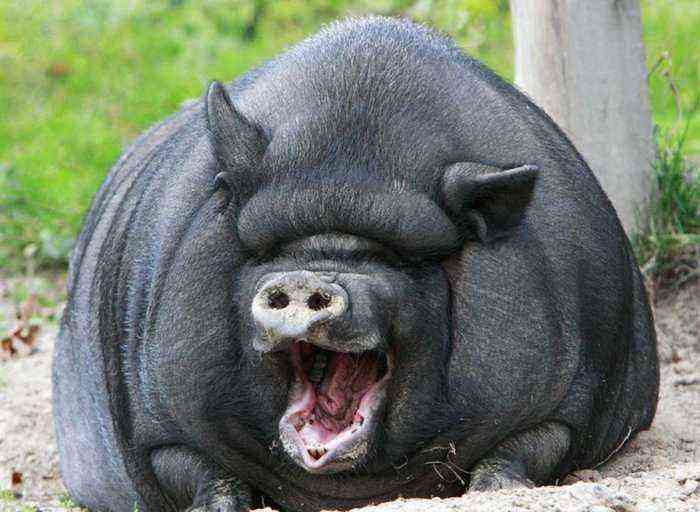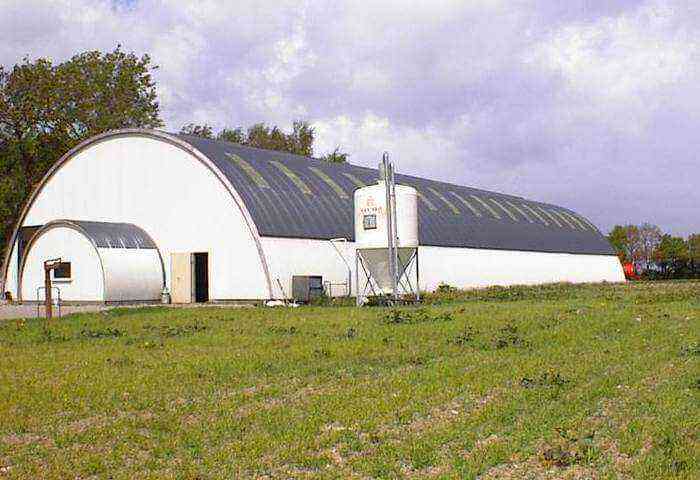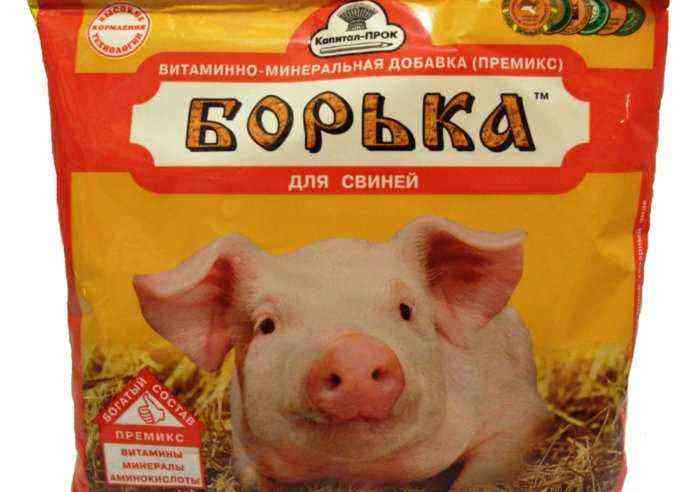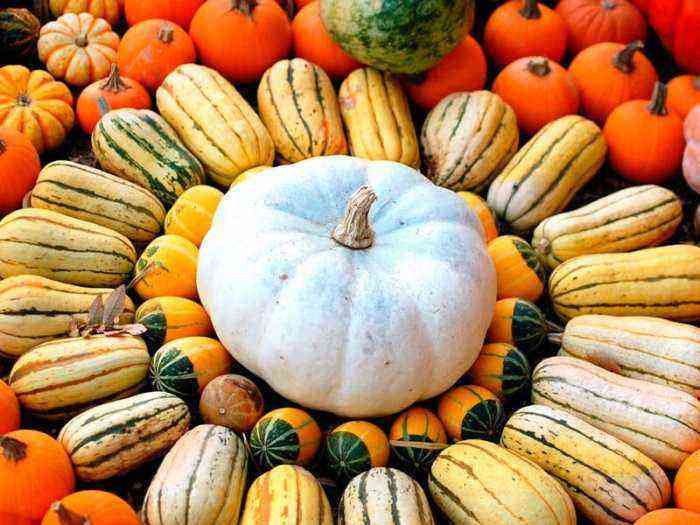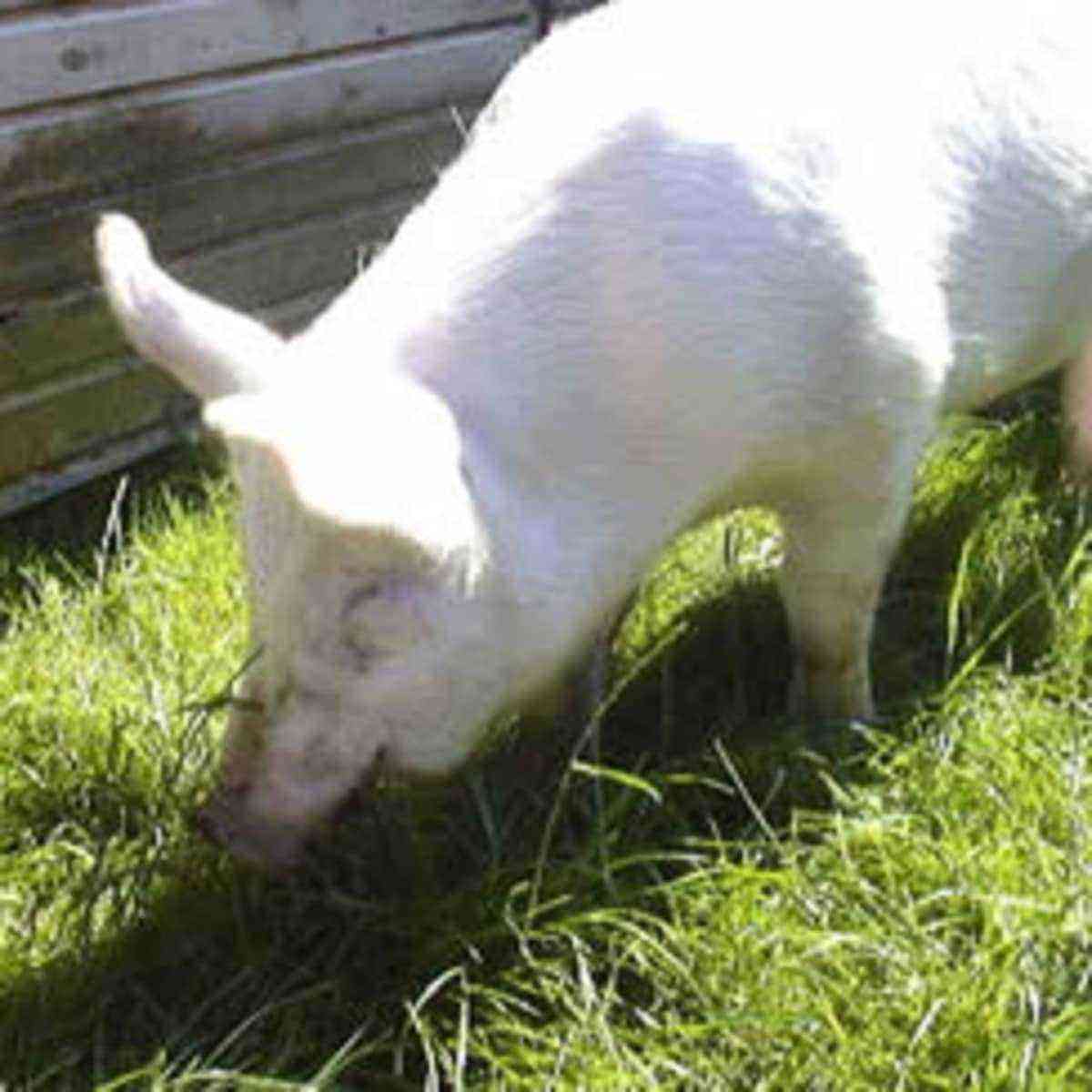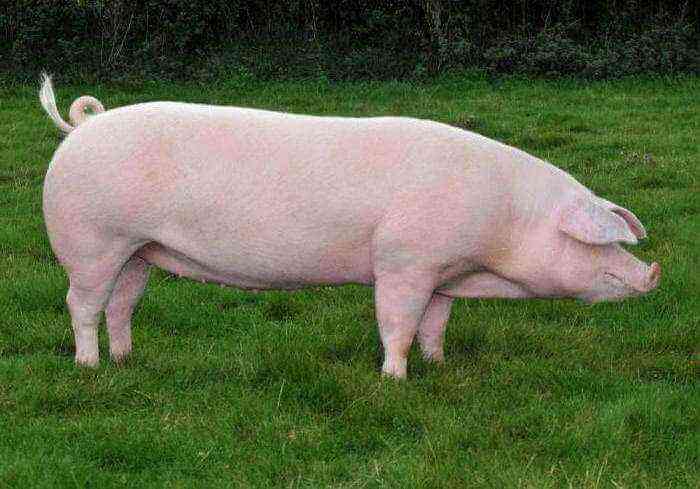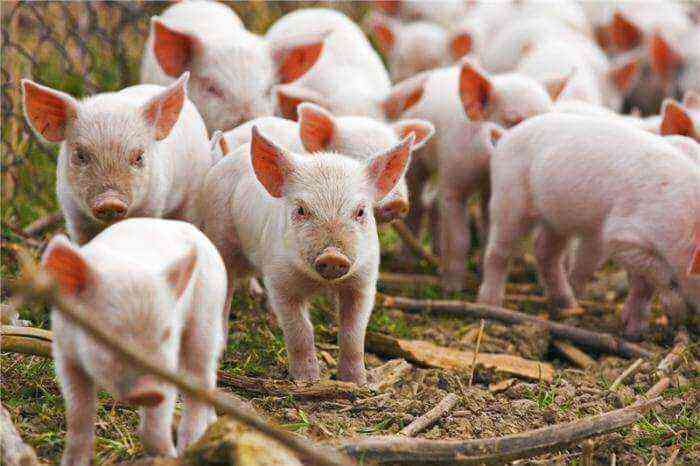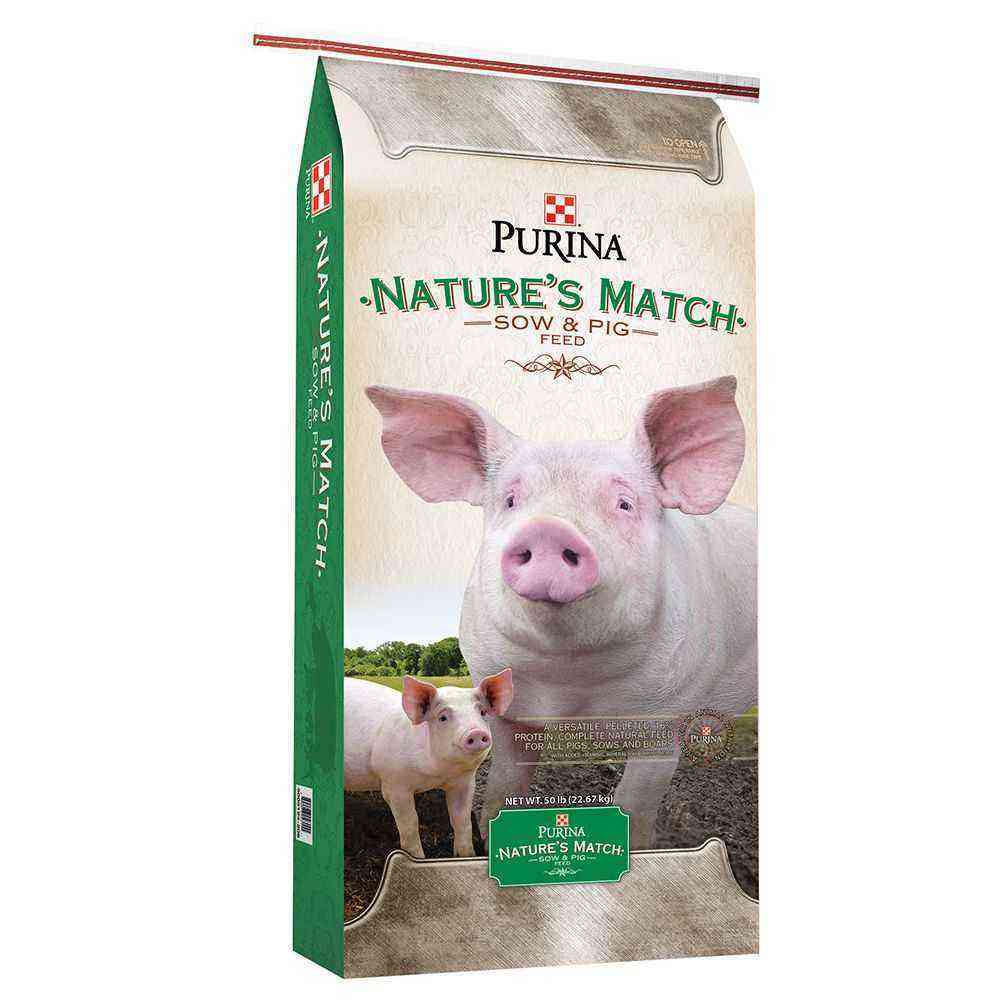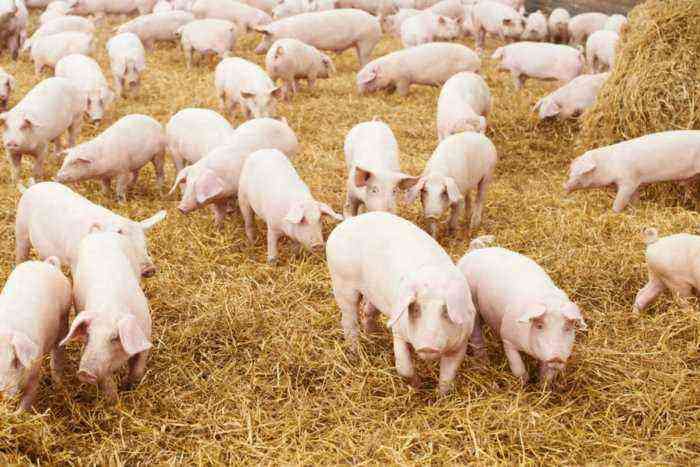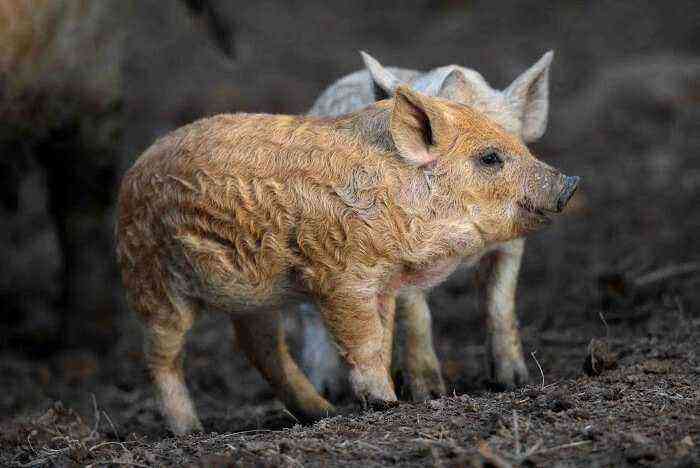Among other livestock, pigs allow you to get an impressive amount of meat and fat in a relatively short period of time. The main thing is to provide them with proper care and a complete, balanced diet. Today, pig fattening technology makes it possible to achieve an increase in the live weight of one individual up to 100-120 kg within just 6 months.
Pig fattening technology
Types of fattening pigs
Fattening pigs at home is of several types. It all depends on what product you need to get at the output. Also, the choice of the method of fattening is determined by the breed of animals and the composition of the forage base.
Today, the buyer prefers lean meats. Therefore, most farms are engaged in bacon and meat fattening. However, pigs are also bred for lard.
Meat
Fattening piglets for meat at home usually starts at three months. Representatives of any breed are suitable for this type of fattening, body features also do not play a role here. As a result, the animal usually gains 100-120 kg of live weight.
Fattening pigs for meat has two subspecies:
- Fattening with low intensity. Requires significant time investment. During the day, the weight gain is small. Maximum live weight – no more than 100 kg. This option will be the best solution if there is a large amount of inexpensive feed with modest nutritional values.
- High intensity fattening. Used by most modern farms. Allows you to get significant profits in a short time. It lasts about 4 months, gives an increase of up to 90 kg. On average, one piglet gains 0,65 kg of live weight per day.
Proper intensive fattening gives a layer of fat no more than 3,5 cm thick, the meat is tender and juicy. To ensure a stable weight gain, pure breed piglets should be selected. Also suitable are young animals obtained by crossing representatives of highly productive breeds.
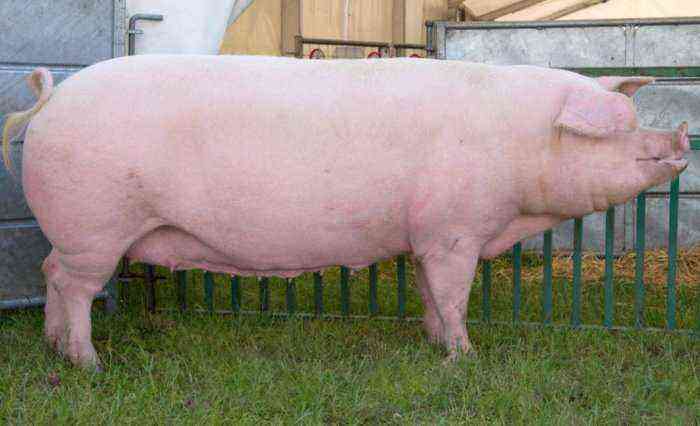
Pigs Landrace
The sow belonging to the Large White breed gives good offspring when crossed with Estonian bacon pig or Landrace boars.
Important! Animals should be kept in comfortable conditions (dry and warm barn of sufficient area) and receive good nutrition.
Feeding is divided into two main stages:
- preparatory, longer, daily weight gain is 0,5 kg;
- final, short, daily gain – 0,75 kg.
It is desirable that the preparatory stage falls on the spring-summer period. The diet of piglets should include at least 30% green fodder. It is important to ensure their diversity:
- root crops (carrots, fodder and sugar beet);
- gourds (pumpkin);
- leaves and stems of legumes.
If the first stage falls in the winter, greens and fresh vegetables can be replaced with grass meal and silage. Included in the diet and harvested in the autumn of root crops.
For rapid and stable growth, animals must receive a sufficient amount of protein: at least 0,115 kg per feed unit. Lack of protein leads to slower growth and early formation of a thick fatty layer.
A mandatory element of the diet should be mineral, vitamin (vitamins A and D, as well as group B) impurities and amino acids (lysine, tryptophan, methionine).
With proper nutrition of the piglet, the resulting weight gain will more than cover feed costs.
In the final stage, the diet of fattening pigs should not contain fish waste and flour, bran, millet and soy. These products can adversely affect the taste of meat.
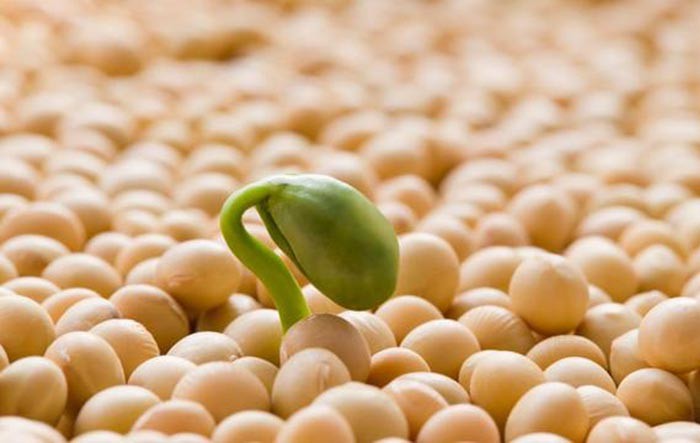
Soy
To get a quality product, you should also adhere to the following rules:
- piglets should receive food twice a day;
- animals should be provided with plenty of fluids;
- keeping fattening pigs in recent months involves a shorter walking time;
- the pigsty should be warm, dry, dimly lit and quiet.
bacon
If it is necessary to obtain meat with thin layers of fat, bacon fattening pigs is chosen. Such meat is predominantly smoked. Piglets aged 2,5 months and weighing about 25 kg are suitable.
To get high-quality bacon, daily nutrition should look like this:
- green fodder – 3 kg;
- reverse and concentrated feed – 1,5 kg each;
- root crops or pumpkin – 2 kg;
- salt – 20 g;
- special vitamin and mineral supplements.
Weight gain at the initial stage should be 0,45 kg per day, during the last 3 months this figure should increase to 0,5-0,6 kg.
Fattening for bacon involves:
- at the final stage, the complete exclusion from the diet of soy, fish waste and bran;
- daily walking in both summer and winter (provides the development of muscle tissue and strengthening the skeleton and reduces the intensity of fat formation);
- two meals a day;
- an obligatory element of the diet is barley (significantly improves the taste and quality of meat and fat layers, reduces the impact of feed that degrades the quality of meat).
To fatty conditions
If pigs are raised for lard, the total weight of the animal can reach 200 kg with only about 40% meat.
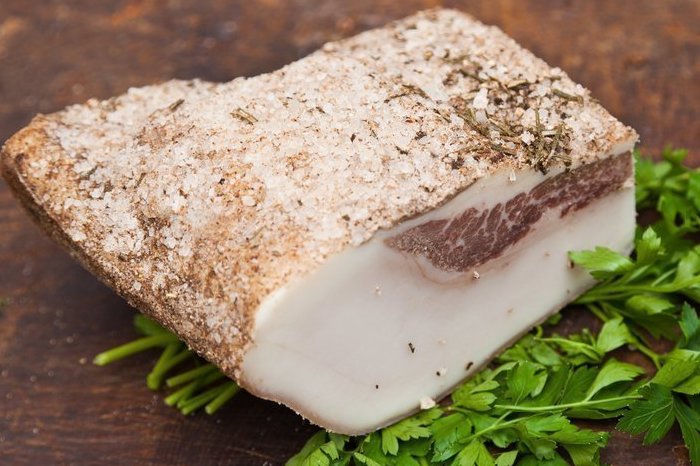
Lard
100 kg piglets are selected for fattening. Their diet should consist of foods high in carbohydrates. As a rule, this is:
- potatoes;
- corn;
- various root crops.
Corn kernels and wheat act as concentrated feed. Every day one animal should receive 3 kg of these products. At the final stage, it is better to give the pigs barley, this will significantly increase the quality and taste characteristics of fat.
During the summer period, a daily increase in live weight of 1 kg will be ensured if the livestock receives:
- 4 kg of green fodder;
- 3,5 kg of pumpkin;
- 3 kg of concentrates;
- 50 g of salt.
If the keeping and feeding of animals met all the required standards, by the end of feeding the pigs try to show a minimum of activity. The body becomes rounded on all sides, and the layer of fat does not allow you to feel the bones of the spine and ribs.
Diet
The diet of pigs must include the following feed:
- root crops and potatoes;
- peas, barley;
- flour of meat and bone and fish origin;
- reversal.

Barley for pigs
It is important that pigs receive the required amount of calcium and sodium. To do this, animals are given chalk and salt, as well as various premixes based on minerals.
In the summer, the livestock should receive a sufficient amount of green fodder. At least 30% of the total amount of food.
Attention! If animals are given exclusively root crops, green fodder and waste, they will gain mass much more slowly.
For the rapid growth of pigs, it is recommended to use compound feed, a variety of premixes and mixtures of grain crops. However, in this case, the percentage of solids in the diet will be quite high. Therefore, it is important that the livestock have constant access to clean and fresh water.
Growth stimulants
Among the growth stimulants used during the fattening of piglets, there are vitamin, tissue, mineral preparations, as well as antibiotics. The use of these substances improves the metabolism and digestion of feed, which contributes to an increase in daily gain. Also, these drugs provide additional protection against microbes, reduce the risk of inflammatory processes and have emulsifying properties.
Mostly, these additives enrich the diet of young animals, individuals with low rates of weight gain, as well as pigs that have recently recovered from the disease.
Pigs usually receive the following list of additives:
- Amylosubtilin GZH. The drug dissolves well in water, increases the daily gain by 15%. Feed consumption is reduced by 12%. Promotes more intense deposition of fat.
- Etony. Weight gain up to 8%, reduction in feed costs – up to 7%. Per day, one animal should be given 0,5 mg of the drug per 1 kg of body weight. After slaughter, fat rich in fatty polyacids and more meat are obtained.
- Betazine. The substance has an antithyroxine effect. It also reduces feed costs while increasing daily body weight gain.
- Azobacterin. Source of nitrogen substances and vitamin B12.
- Monosodium glutamate. Animals digest food better and absorb useful trace elements. The meat comes out tastier.
- Water-soluble acids (citric, succinic, glutamic). The main effect is also to stimulate growth.
Among the antibiotics that stimulate the increase in live weight, added to the combined feed and various premixes, we can distinguish:
- bite;
- penicillin;
- streptomycin;
- hygromycin;
- cormogrizin;
- biovit;
- flavomycin;
- icin.
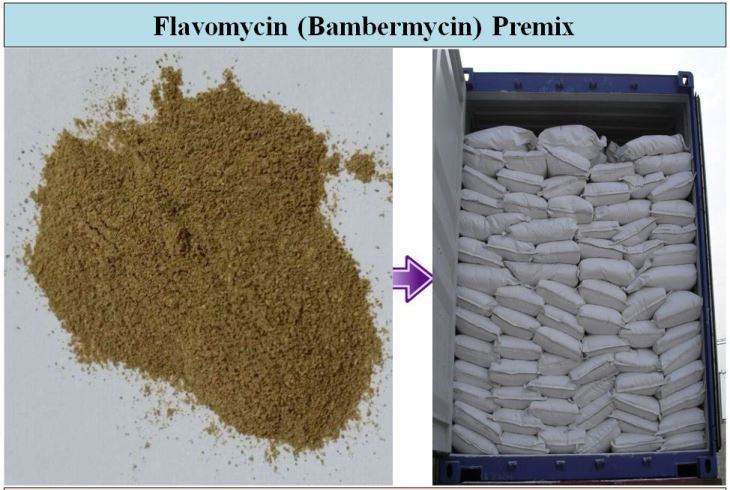
Flavomycin
Antibiotics are not only able to provide more active growth of the animal, but also strengthen its immunity and resistance to infectious diseases. These drugs are most effective when used in conjunction with vitamin premixes. Animals should receive only recommended doses of antibiotics. Exceeding them can harm your livestock.
The use of growth stimulants allows you to save on the purchase of feed. It also reduces the time required for piglets to gain the desired weight.
Pig fattening technology
All types of fattening are based on one common technology, which includes:
- selection of the optimal feed composition;
- division of fattening into stages.
To get a good daily gain and at the same time save money, large farms usually use compound feed. Individual farmers also include a large amount of dry mixes in the diet.
Animals will show rapid weight gain if:
- they are provided with proper care and maintenance;
- they have a good appetite;
- the diet is well balanced.
In most cases, a phased fattening option is used:
- at the first stage, the animals receive regular nutrition sufficient for stable growth and development, daily walking is provided;
- at the second stage, feeding becomes more intense, daily gains increase, feeds that can negatively affect the taste and quality of meat and fat are excluded from the diet, animals are restricted in movement.
For months 6
A set of 120 kg of live weight by 6 months is quite possible if the content and diet of piglets include everything necessary.
The first stage of fattening is aimed at obtaining good growth and stable development of the piglet. In sufficient quantities, he should regularly receive:
- return;
- herbal flour;
- bran.
Every day, the livestock should be in the fresh air and move. Therefore, you should enclose a place for walking next to the barn.

Walking area next to the barn
At 5 months, piglets begin to fatten as intensively as possible. The feed supply is growing every day. At this stage, you need to follow two basic rules:
- high energy value of the diet;
- reduction of physical activity to the necessary minimum.
Attention! Fat gain will increase significantly if the diet of piglets includes an abundance of feed rich in carbohydrates.
In order to guarantee the required weight gain, each day the pigs must receive:
- mineral additives;
- concentrates;
- vitamin admixtures.
The most effective method
A zealous owner wants to get the fastest growth at the lowest cost. Today, the most effective is considered to be fattening for meat using dry compound feed.
At 6 months, the weight of a piglet will range from 100 to 120 kg if it consumes about 300-400 kg of combined feed during the fattening period. If the feed base in the diet of a pig is potatoes, it will need more than 1 ton. At the same time, 100 kg of live weight can be obtained only after 9-11 months.
Conclusion
In order for pig breeding to bring a stable profit, it is important to strictly follow the rules of fattening. It does not matter for what purpose you are breeding these animals: bacon, meat or lard. In order for your products to be tasty and of high quality, try not to save on the nutrition of pigs and provide them with maximum comfort.
